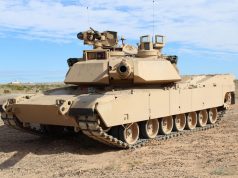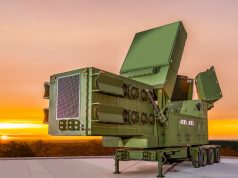
The US Army has awarded L-3 Communications Integrated Systems and Raytheon Applied Signal Technology two contracts for the development of sensor suites for its next-generation intelligence gathering aircraft.
The initial awards, valued at $4.37 million, are for the first phase of the multi-domain sensing system (MDSS) program to demonstrate, develop, build, and integrate prototype electronic intelligence (ELINT) and communications intelligence (COMINT) sensors.
Eventually one of the systems will be integrated onto the High Accuracy Detection and Exploitation System (HADES), the Army’s future airborne intelligence, surveillance, and reconnaissance (ISR) system.
This competitive first phase of a multi-phased OTA prototype project will demonstrate the vendors’ sensors under controlled conditions, leading to Phase 2 in which one or more vendors will further develop and build their sensors specifically for the HADES platform.
Phase 3 will then provide for a holistic COMINT/ELINT system to be flight tested and success criteria determined for further production.
The overall value of the OTA prototype project is expected to total approximately $49 million over all phases.
Phase 1 of the OTA prototype project is a competitive effort leading to down-select and award of a Phase 2 OTA to one or more vendors. Remaining phases are planned to finalize the prototype design, integrate it onto the HADES aircraft platform, and conduct testing and evaluation.
“The Army is pursuing HADES to address the demands of future multi-domain operations (MDO) against peer- and near-peer adversaries,” said Dennis Teefy, Project Director for Sensors – Aerial Intelligence (PD SAI).
“HADES will be globally deployable and provide a multi-faceted sensing capability at higher altitudes and longer ranges, and with longer endurance than is currently available from the Army’s RC-12 Guardrail, MC-12 Enhanced Medium Altitude Reconnaissance and Surveillance System (EMARSS), and EO-6C Airborne Reconnaissance Low (ARL) aircraft.”
“The goal is to provide deep-sensing intelligence collection of indicators and warnings, electronic order of battle, and patterns of life for target development. This will allow stand-off operations to detect, locate, identify, and track critical targets for the ground commander.”
The US Army is already conducting early testing for the HADES program, having recently deployed the Artemis intelligence, reconnaissance and surveillance technology demonstrator for exercises and evaluations. The Artemis is based on a Bombardier Challenger 650 jet and was delivered by Leidos under a contract from 2019. The platform provides high-altitude sensing capabilities against near peer adversaries and helps bridge intelligence gaps in the multi-domain operations mission.


























